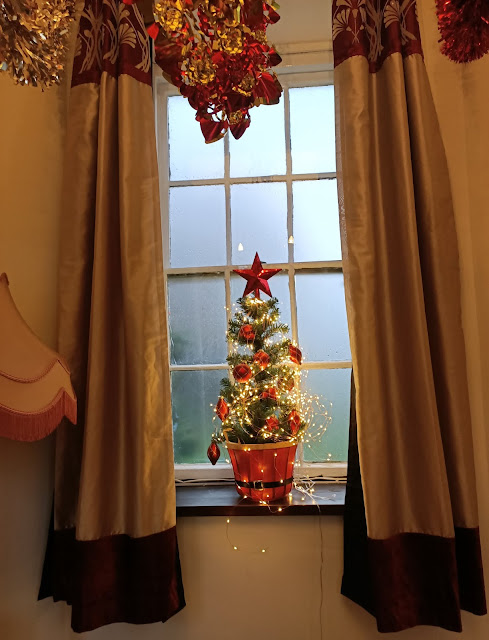Spring is approaching
 |
| How a border design begins: pen, paper and planting inspiration |
Spring is approaching. The signs are everywhere in the gardens
at Betley Court. The snowdrops have emerged in profusion, and they will be
followed soon by the daffodils (the first tête-a-têtes are bursting to open
already), then the bluebells in April. Leaves buds on the deciduous trees are
tightly wrapped and ready to unfurl as the days get longer and warmer.
 |
| Narcissus Tete-a-Tete, always the first daffodil to show its face |
We started planning work on the formal borders of the parterre
this week. There are the routine tasks; lawn repairs, edging, thinning out the
more invasive of the self-sown plants (I refuse to use the word ‘weed’). I need to set aside an afternoon and prepare a
schedule of quantities of material, and then a scheme of works, make sure we
order everything we need, and have the manpower to undertake the tasks. Not exciting,
but necessary.
One aspect that is exciting is been working on planting designs
for the borders. We’re maintaining the border layout that appeared sometime
between 1909 and 1925, however we have no firm idea what planting scheme
existed, if there ever was one. We have glimpses of what the borders looked
like during World War II. There’s a postcard of recuperating servicemen taking
part in horticultural therapy, hulking lawn rollers around. The beds seem to be
arranged as rose beds, quite typical for the time, and quite a luxury – perhaps
the fact Betley Court boasted its very own walled kitchen garden saved the
roses from being dug up as part of the ‘Dig for Victory’ campaign!
 |
| Servicemen in the gardens c. 1940 |
When Professor and Doctor Brown moved in to Betley Court in
1979, they had been fortunate in that Captain Fletcher-Twemlow had kept on his
Head Gardener, a Mr Percy Mullinor, to keep the lawns at the front of the house
in shape. Mr Charlie Simpson, the gardener the Brown’s had employed at their previous
home in Madeley, followed the Browns over to Betley. My abiding memory of Charlie
was of him keeping order in the gardens, armed with little more than ancient Dutch
hoe, and unending patience. The family archives
(a bit of grand description for the series of plastic boxes that hold the photographic
collection of the family) contains yellowing pictures of events the Brown’s
hosted; a May Day festival, complete with Morris Men, and numerous family
weddings and welcoming parties. These photos reveal the borders c. 1980s, boasted
an eclectic selection of bright perennials and hardy annuals (blousey poppies,
crocosmia, irises, fuchsias, to name a few) with rose bushes and bedding plants
dotted in between.
Some years ago (perhaps 2012), in keeping with the Arts
& Crafts era the flowerbeds came into being, I began planting box hedging
and topiary shapes (Buxus sempervirens). This is to give the beds some sort of
form and structure all year round. As so many of the family gatherings happen
during the Christmas holidays, the symmetrical pattern of evergreens gives interest,
even when flowers are scarce, or when there is a blanket of snow. And of
course, the topiary patterns can be viewed from the ‘high status’ rooms that
overlook the lawn. Or at least they will, once they’ve matured a bit.
Establishing them has been not easy task. The soil here is
thin, free-draining and sandy. We have an enthusiastic and growing rabbit
population to compete with too. Our handymen will attest to the vast quantities
of leaf mould we ask them to make from the approximately 4 tonnes of deciduous
leaves raked from the paths every autumn. This makes a fine mulch that keeps
our worms and soil bacteria very happy, although one unexpected side effect is
that the increased worm population does tend to draw the moles in!
I’m currently working on a planting plan for the flowers
that will fill the flower beds, making pragmatic decisions, choosing perennials
over bedding plants. Rugged plants, good ‘do-ers’. Our plants are sourced
locally – grown ‘hard’ in a nursery in North Staffordshire, they are generally more
successful than plants ferried in from hot houses in Holland that are available
at many garden centres. I’ve got other interesting specimens growing in the
polytunnel on my allotment, including a lovely thistle-like plant called Miss
Willmott’s Ghost (Eryngium gigantium) that I was give by a grower at last year’s
RHS Flower Show at Tatton Park. It’s an interesting architectural plant with
silver-white cones and silver bracts. Insects love it (another consideration,
when choosing plants). Its going to be
full steam ahead once it gets a little warmer. I can’t wait! |
| Pots and pots, tulips, daffodils, crocuses |


Comments
Post a Comment